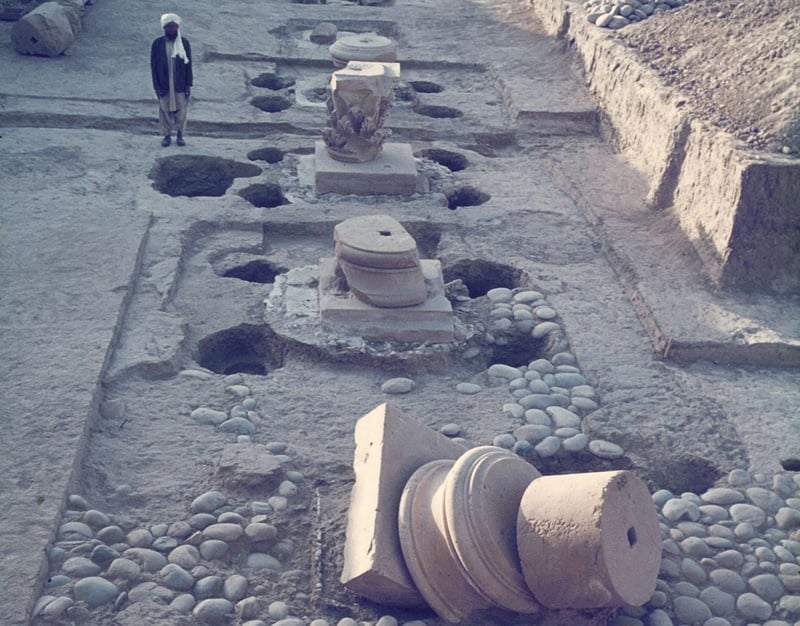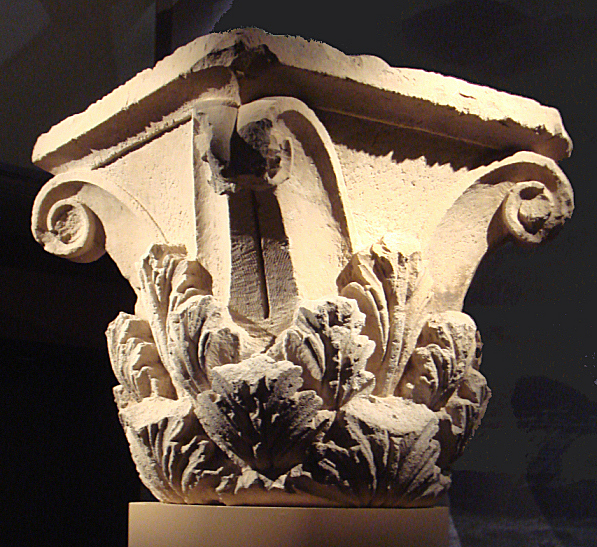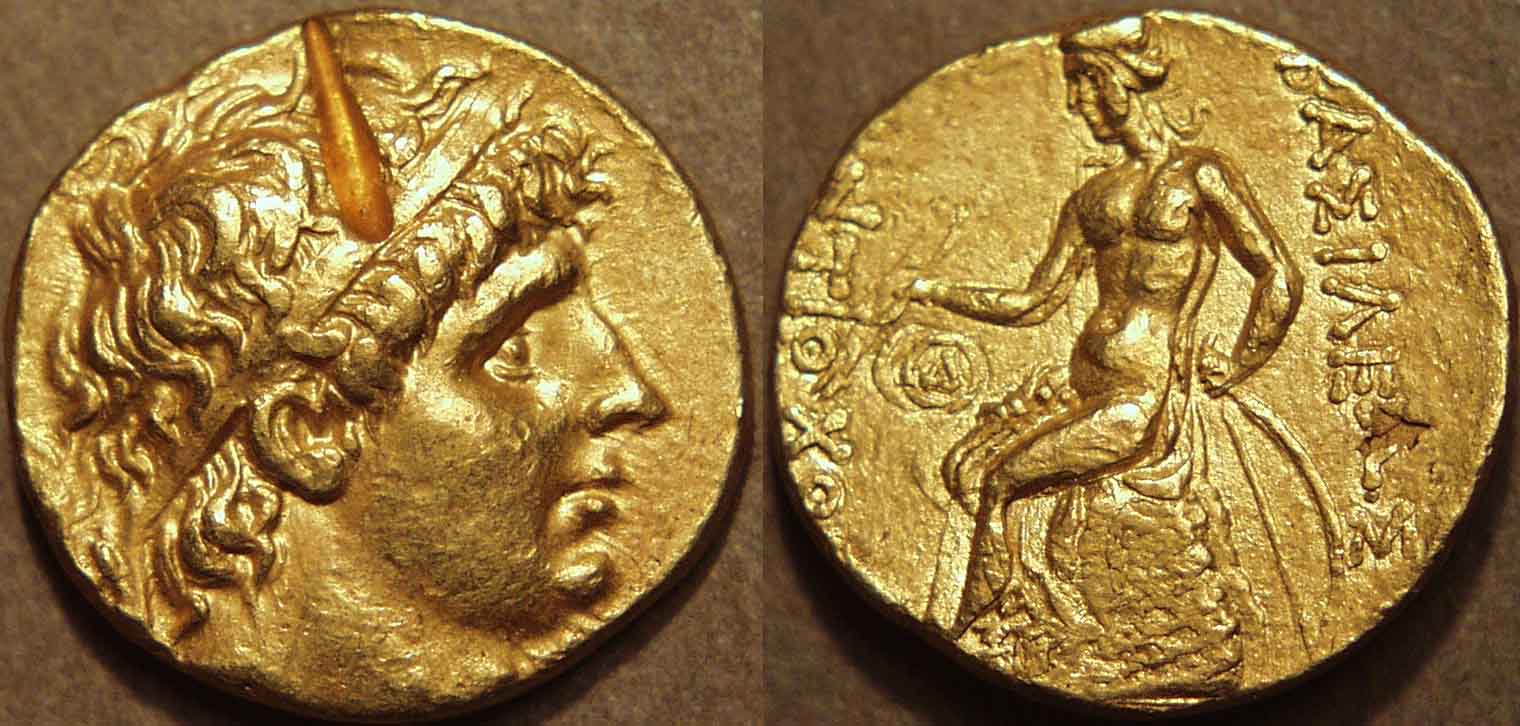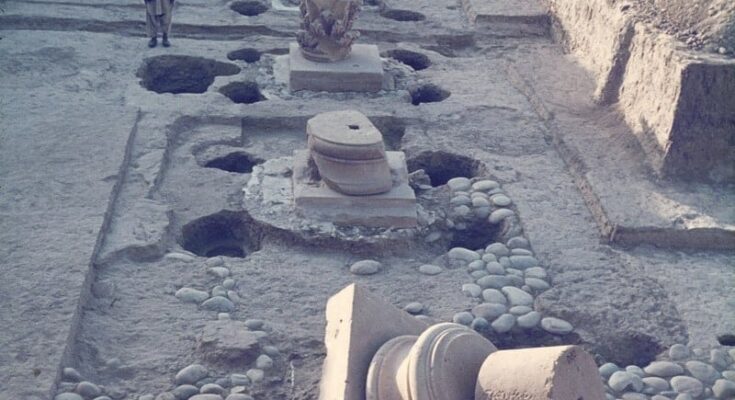
The ancient Greek city of Ai-Khanoum in Afghanistan was discovered by accident in the 1960s, but its demise has captivated historians and archaeologists for decades.
The city that was lost under the desert sands for almost two thousand years was founded by one of Alexander the Great’s successors, Seleucus I Nicator. It is believed to be the historical city of “Alexandria on the Oxus.” Also possibly later named Eucratidia, this was one of the primary cities of Alexander’s Greco-Bactrian Kingdom.
It served as a vital hub for trade and cultural exchange between the Greco-Macedonian world and the native inhabitants of Bactria. Its strategic position along the Silk Road ensured a bustling economy, bolstered by the fusion of Greek and local cultures.
Ai-Khanoum flourished as a cosmopolitan center, adorned with Greek-style architecture. It boasted a grand palace, sprawling marketplaces, a gymnasium, and well-planned residential areas.

It was laid out in a grid pattern, reminiscent of many Greek cities. The city’s inhabitants included Greeks, as well as various other ethnic groups.
The palace gateway was supported by eighteen columns. Within, the palace’s own courtyard was lined with 118 elaborately carved Greek Corinthian columns some 5.7 meters high and others 10 meters high. The palace interior was a carefully planned sequence of rooms and halls.

A residential zone was situated in the area south of the palatial complex. This consisted of rows of blocks of large aristocratic houses, separated by streets at right angles to the main north–south road.
“There were Greek, Macedonian and Thracian citizens, who enjoyed the temples, the gymnasiums and the arenas exactly as if they were in a city on the Greek mainland,” wrote Oxford classicist Robin Lane Fox.
The city’s acropolis had stood on the massive rocky cliff rising beside and protecting the lower city on a small plain at the confluence of the rivers Kokcha and Amou Daria, historically known by its Latin name, Oxus.

The excavators discovered three temples at Ai-Khanoum—a large sanctuary on the main street near the palace, a smaller temple in a similar style outside the northern wall, and an open-air podium on the acropolis. The large sanctuary, often called the Temple with Indented Niches, was located prominently in the lower city between the main street and the palace.
While originally thought to have been founded by Alexander the Great, more recently, scholars believe this easternmost Hellenic city was more likely founded by the subsequent Seleucid Empire, a major center of Hellenistic culture reinforced by steady immigration from Greece.
“What is certain is that, two centuries after Alexander the Great, Greek was still spoken [there],” notes Nicolas Engel, head of Afghan antiquities at the Guimet Museum in Paris.

What caused the demise of the ancient Greek city in Afghanistan?
Despite its initial prosperity, Ai-Khanoum faced challenges that contributed to its eventual decline.
Ai-Khanoum’s geographical location made it susceptible to geopolitical disruptions. The city found itself sandwiched between the rival empires of the Seleucids and the Mauryas, both vying for control of the Silk Road trade routes. This political tug-of-war likely destabilized the region and impacted the city’s ability to maintain its economic and political autonomy.
The region was vulnerable to invasions by various nomadic and indigenous groups, including the Sakas, Yuezhi, and others. These invasions disrupted the stability of the city and may have contributed to its decline.
As the Hellenistic era waned, the influence and power of the Greeks in the East began to decline. With emerging regional powers seeking to assert their own identities, many Hellenistic cultural centers, including Ai-Khanoum, gradually lost their relevance. They became irrelevant.
The overarching cultural shift towards Parthian and later Sassanian influences might have marginalized the Greek presence and contributed to Ai-Khanoum’s decline.
The exact circumstances surrounding the downfall of Ai-Khanoum remain elusive. Among the many theories posited, some suggest that the city fell victim to invasions or wars, while others propose natural disasters such as earthquakes or flooding.
There is also speculation regarding a gradual abandonment due to economic decline or a shifting allegiance towards religious and cultural centers elsewhere.
The confluence of the Amu Darya and Kokcha River could lead to periodic flooding, which might have damaged the city’s infrastructure over time.
The exact date of Ai-Khanoum’s decline and abandonment is not well-documented, but it likely occurred in the 2nd century BCE. The city was gradually abandoned, and its ruins were eventually covered by sediment and lost to history.
Today, Ai-Khanoum is an archaeological site of historical significance, but it no longer functions as a city.



